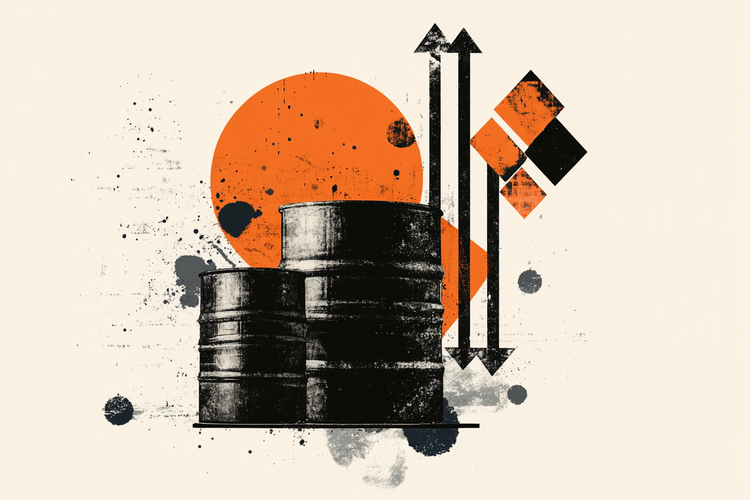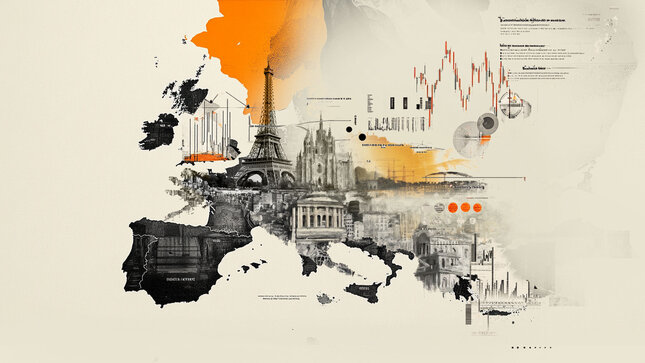WTI rises to near $59.50 due to potential easing of US-China tensions
- WTI price rises due to growing optimism over a potential easing of tensions between the US and China.
- Trump indicated possible trade agreements with India, Japan, and South Korea while expressing optimism about resolving issues with China.
- Crude prices find support as bullish momentum strengthens following Trump’s firm warning of secondary sanctions against countries importing Iranian Oil.
West Texas Intermediate (WTI) crude Oil price extended gains for a second consecutive session, trading near $59.40 per barrel during Asian trading hours on Friday. The rise in Oil prices was supported by growing optimism over a potential easing of tensions between the US and China, the world’s two largest Oil consumers.
Market sentiment improved after US President Donald Trump indicated the possibility of upcoming trade agreements with India, Japan, and South Korea, while expressing hope for progress in resolving trade disputes with China. According to Bloomberg, China is considering resuming trade negotiations, acknowledging US outreach but insisting that tariff-related concerns—the core source of friction—must be addressed.
Bullish momentum was further fueled by Trump’s stern warning of secondary sanctions on any country purchasing Iranian Oil. Trump declared that all such purchases must cease immediately and warned that any entity continuing to buy Iranian oil or petrochemical products would be subject to US sanctions. “They will not be allowed to do business with the United States of America in any way, shape, or form,” Trump posted on Truth Social on Thursday.
These comments came after the US postponed its latest round of nuclear talks with Iran, which had been scheduled for Saturday in Rome. A senior Iranian official told Reuters that a new date would be determined based on the US approach moving forward.
Despite recent gains, WTI remains on track for a weekly loss of about 5%, weighed down by persistent trade uncertainties, weaker demand signals following a US GDP contraction, and China’s most severe factory slowdown in over two years.
Adding to the bearish outlook, reports indicate that Saudi Arabia has conveyed to allies and industry stakeholders that it is not inclined to support prices with further production cuts and is prepared to endure a prolonged period of lower prices. This has fueled expectations that OPEC+ may announce an increase in output at its upcoming meeting on May 5.
(This story was corrected on May 2 at 08:30 GMT to say, in the headline, that trade tensions are easing between China and the US, not the UK.)
WTI Oil FAQs
WTI Oil is a type of Crude Oil sold on international markets. The WTI stands for West Texas Intermediate, one of three major types including Brent and Dubai Crude. WTI is also referred to as “light” and “sweet” because of its relatively low gravity and sulfur content respectively. It is considered a high quality Oil that is easily refined. It is sourced in the United States and distributed via the Cushing hub, which is considered “The Pipeline Crossroads of the World”. It is a benchmark for the Oil market and WTI price is frequently quoted in the media.
Like all assets, supply and demand are the key drivers of WTI Oil price. As such, global growth can be a driver of increased demand and vice versa for weak global growth. Political instability, wars, and sanctions can disrupt supply and impact prices. The decisions of OPEC, a group of major Oil-producing countries, is another key driver of price. The value of the US Dollar influences the price of WTI Crude Oil, since Oil is predominantly traded in US Dollars, thus a weaker US Dollar can make Oil more affordable and vice versa.
The weekly Oil inventory reports published by the American Petroleum Institute (API) and the Energy Information Agency (EIA) impact the price of WTI Oil. Changes in inventories reflect fluctuating supply and demand. If the data shows a drop in inventories it can indicate increased demand, pushing up Oil price. Higher inventories can reflect increased supply, pushing down prices. API’s report is published every Tuesday and EIA’s the day after. Their results are usually similar, falling within 1% of each other 75% of the time. The EIA data is considered more reliable, since it is a government agency.
OPEC (Organization of the Petroleum Exporting Countries) is a group of 12 Oil-producing nations who collectively decide production quotas for member countries at twice-yearly meetings. Their decisions often impact WTI Oil prices. When OPEC decides to lower quotas, it can tighten supply, pushing up Oil prices. When OPEC increases production, it has the opposite effect. OPEC+ refers to an expanded group that includes ten extra non-OPEC members, the most notable of which is Russia.
Forex News
Keep up with the financial markets, know what's happening and what is affecting the markets with our latest market updates. Analyze market movers, trends and build your trading strategies accordingly.











